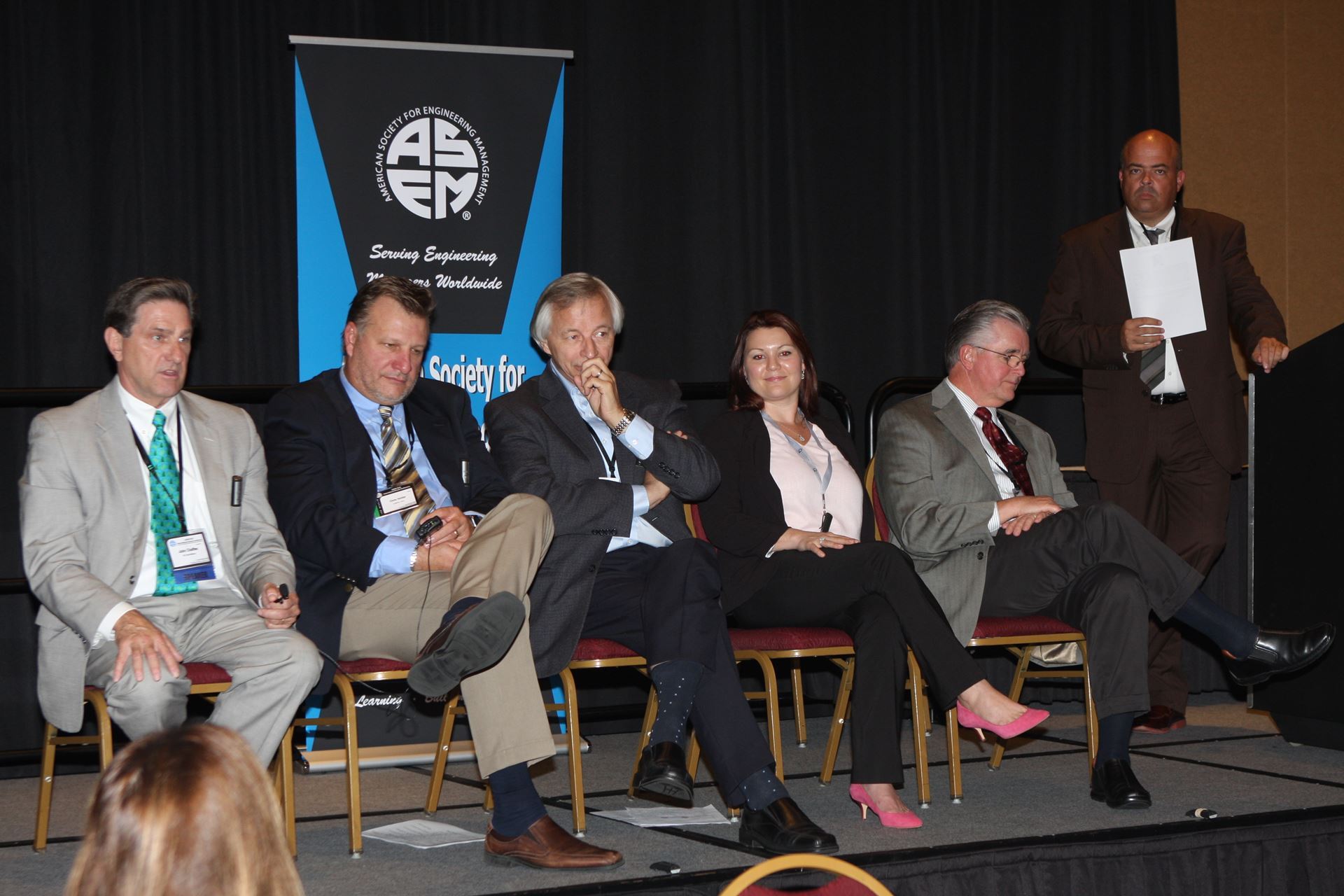by Ken Sexe
It has been an honor and a pleasure to moderate this year’s International Annual Conference (IAC) Industry Roundtable. This opportunity gave me the chance to interact with and learn from several of the most knowledgeable engineering management professionals from a myriad of industries. I left the Roundtable with a much better understanding of where ASEM has gone and where we can go in the future evolving ASEM towards the future needs of its members. I would like to take this opportunity to thank all of the panelists for their energy, involvement, and patience they provided to me to ensure that we had a successful Roundtable.
Each of the panelists have been gracious enough to provide some final comments related to their discussion at the Industry Roundtable. I hope that these statements provide our organization and its members the same insights that I had when I read them:
 John D. Chaffee, MA Economic Geography (President & CEO, NCEast Alliance). Engaged Engineers: Cultivating the Next Generation
John D. Chaffee, MA Economic Geography (President & CEO, NCEast Alliance). Engaged Engineers: Cultivating the Next Generation
There is a dearth of engineering talent looming on the horizon with the retirement of baby boomers. The current structure of most educational systems is not producing a sufficient number of qualified individuals to enter engineering schools to replenish the profession. Companies, and their engineers, need to become more directly involved in supporting schools, teachers and students. NCEast Alliance has developed a model that produces better results and can be replicated in other regions of the country. STEM East, as a component of NCEast, a regional economic development organization, has succeeded in 'growing talent' locally through vibrant and robust partnerships with companies, public schools, community colleges and universities.
Danielle Gabinetti (Engineering Section Manager, Raytheon Information, Intelligence and Services). Utilizing AMP Solutions in a Defense Industry Environment
Within the Defense Industry, there is a growing trend of major knowledge holders nearing retirement age and a loss of how to retain young technical employees. This knowledge gap could be bridged by applying Autonomy, Mastery and Purpose (AMP) Management Principles. In particular, motivating young technical employees via Purpose can be realized when they work in the field with end products and end users. When employees see how meaningful their efforts are to the customers, war fighters, allies and our communities they inevitability gain a sense of purpose.
ASEM should reach out to engineering companies, such as Raytheon, to offer a venue to recruit both recent college graduates and Subject Matter Experts.
Chris Holder (Research and Engineering Lead (AIR-4.0), Commander Fleet Readiness Centers (COMFRC) Naval Air Systems Command (NAVAIR)): Leadership: The Key to Change Management
Most people dislike change, both personally and professionally. With that being said, engineers are the most averse to change based on their leanings towards order, set rules governing the physical world, and the need to understand. To create a successful environment for change within the engineering world, strong leadership is the key. The ability to translate a vision into reality and then execute that vision with tenacity and consistency is paramount.
A strong leader who wants to create change in an engineering environment must motivate, have a vision, develop support, manage the transition, and maintain momentum. If a leader can successfully embrace and apply these tenants, meaningful change can happen, even with engineers.
George Strodtbeck (Vice President, SBTI), Change Maturity and Kano
Change happens over time. Beginning with a defined future state, a system change can be defined using S-Curves which describe a system's maturity. Combining S-Curves with the Kano Model helps leadership to plan for the growth of new processes, methods and skills maintained by the functions. Using this approach supports a planned change that will take time to deploy across an organization.
Dale Wahlstrom (CEO, ACT 3 LLC Consulting): Engineering in Medical Technology: What is happening?
In the world of medical technology, the clinical environment is undergoing dramatic change globally. ASEM is uniquely positioned at the crossroads of academic and private sector “entanglement” and could play a much needed role in defining programming and educational opportunities for students and those professionals needing re-training. Development of experiential immersion opportunities in health care environments for students is an example of where ASEM could provide leadership.
